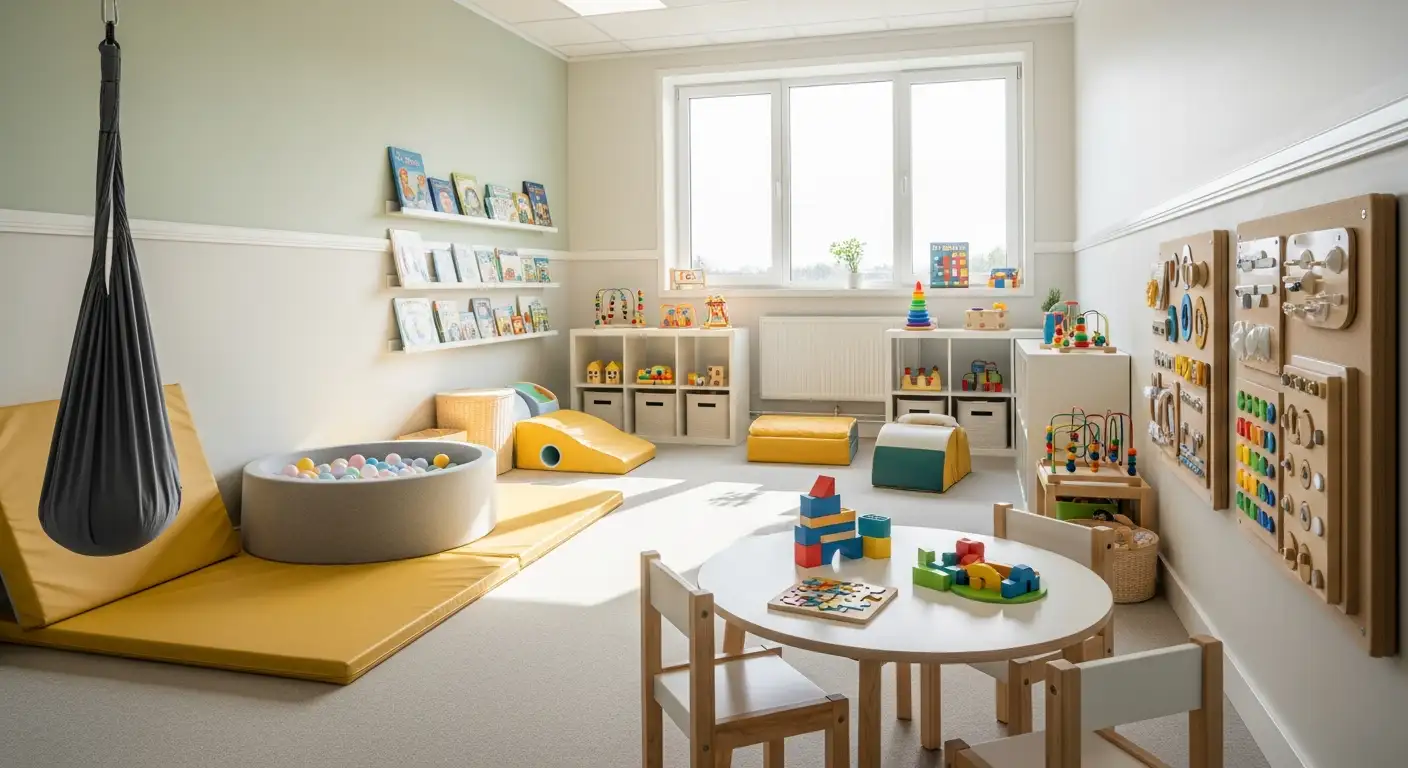Autism Facial Expressions
Deciphering the Nuances of Facial Behaviors in Autism

Understanding Facial Expressions in Autism Spectrum Disorder
Facial expressions are fundamental to human social interactions, conveying a spectrum of emotions and intentions. In autism spectrum disorder (ASD), these expressions often diverge from typical patterns, influencing social understanding and communication. This article explores the complexities of facial expressions in autistic individuals, highlighting common characteristics, underlying neural and developmental factors, and emerging technological advances in recognition and assessment.
Common Facial Expressions in Autism
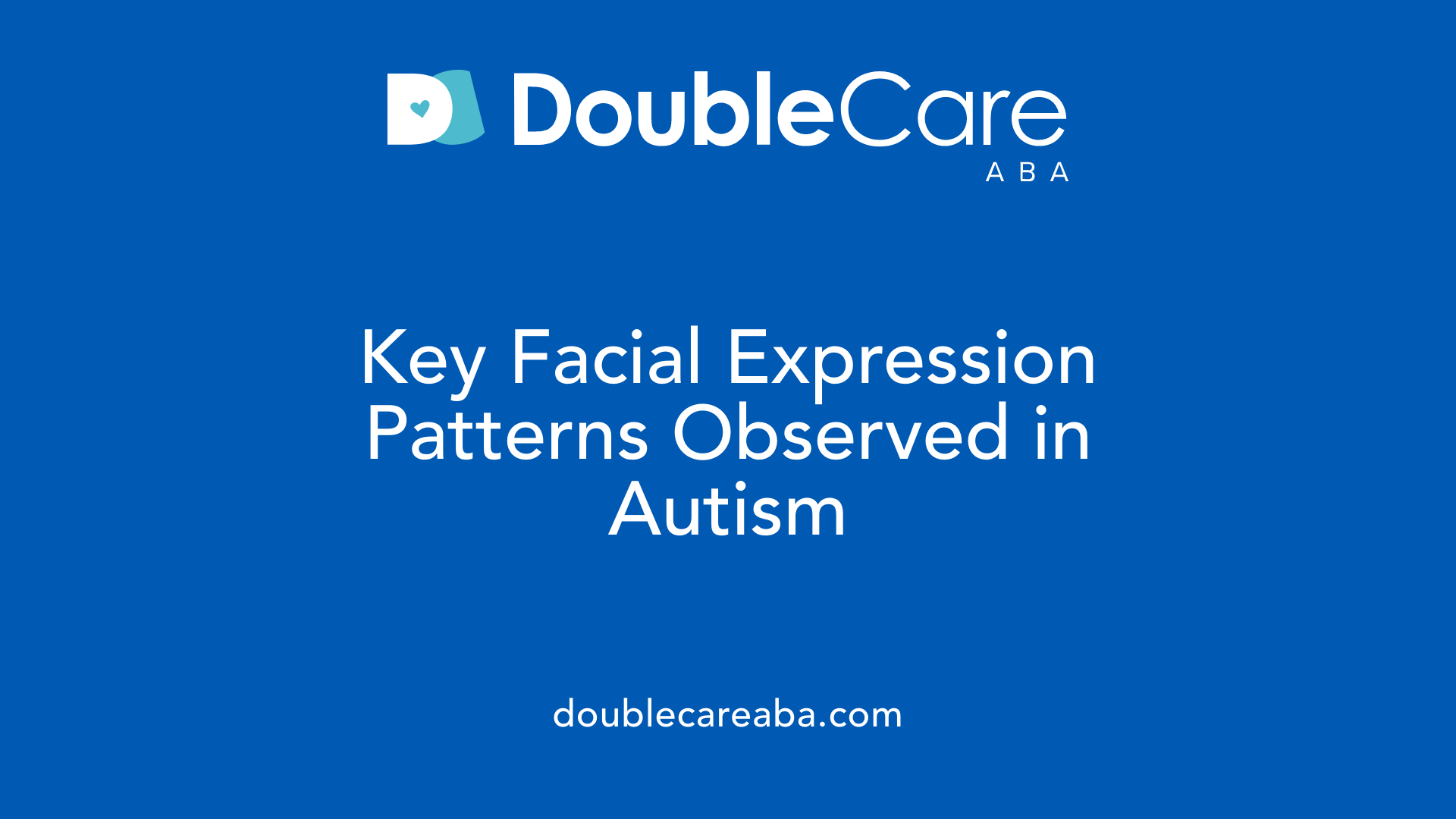
What are common facial expressions observed in individuals with autism?
Individuals with autism spectrum disorder (ASD) often display distinctive facial expression patterns. They tend to have limited eye contact and inconsistent gaze behaviors, which can make their social interactions seem less engaging or more unusual. Their facial expressiveness is generally reduced, meaning they produce fewer spontaneous expressions like smiles or frowns. When they do express emotions, these expressions can sometimes appear exaggerated, overly intense, or less natural than those of neurotypical individuals.
Autistic individuals may also produce longer-lasting emotional expressions when responding to stimuli—both positive and negative. For example, they might sustain smiles or frowns longer than typical peers, especially in response to audiovisual stimuli. Unusual behaviors such as inappropriate smiling or viewing neutral faces as more negative are also common. These patterns may lead to misunderstandings in social settings, as others might interpret their expressions differently.
Can autistic individuals recognize and interpret facial expressions of emotion?
One of the notable challenges faced by those with ASD is difficulty recognizing and interpreting others' facial expressions. Both autistic and neurotypical observers find it difficult to accurately read emotions expressed by individuals with autism. The expressions they produce are often less recognizable and perceived as odd or exaggerated, making social communication more complex.
This recognition difficulty is rooted in genuine differences in how emotional expressions are internally represented. Research shows that autistic adults tend to have less precise facial expression representations, which hampers their ability to produce and interpret subtle emotional cues. Factors like body posture also influence their facial perception, and increased influence of body cues can further complicate emotion recognition.
Additional insights and technological advances
Recent studies using advanced tools like machine learning are helping researchers measure and analyze subtle facial micromovements—tiny muscle movements often invisible to the eye. Findings indicate that while muscles responsible for emotional expressions are active in autistic individuals, the intensity and duration of movements differ from neurotypical peers. This difference often results in facial signals that are perceived as odd or overly intense, contributing to social misunderstandings.
Moreover, understanding and interpreting these subtle cues are essential for improving social interactions and diagnostic procedures for autism. Ongoing technological advancements aim to enhance recognition systems, potentially leading to better support for autistic individuals in social communication.
| Aspect | Typical Expression | Autism Spectrum Expression | Additional Details |
|---|---|---|---|
| Eye contact | Consistent, engaging | Often limited or inconsistent | Affects social engagement |
| Expressiveness | Frequent and natural | Less spontaneous, more controlled | Can produce exaggerated or subdued expressions |
| Recognition | Accurate in neurotypicals | Difficult for both autistic and neurotypical observers | Impacts social understanding |
| Response duration | Short and context-appropriate | Longer-lasting or odd responses | Influences social interactions |
In summary, autistic individuals display distinct facial expression patterns characterized by reduced and often atypical expressiveness. Advances in research and technology are helping to deepen our understanding of these behaviors, paving the way for better social support and diagnostic tools.
Facial Morphology and Early Developmental Traits
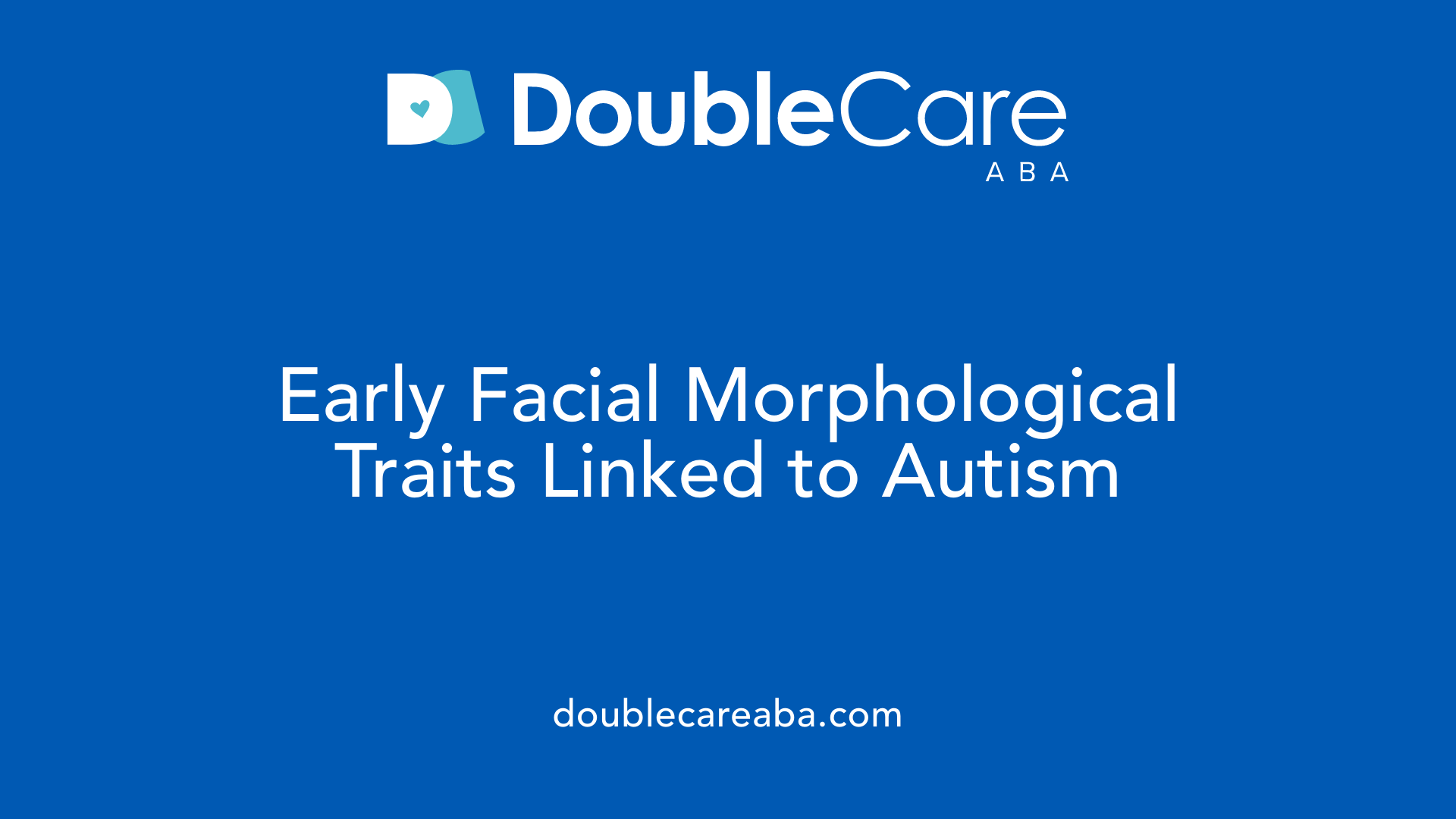
What are the facial characteristics associated with autism?
Individuals with autism often show certain facial features that can be observed in early developmental stages. These include a broader upper face, a higher forehead, a shorter philtrum, and a broader mouth. Such traits are not definitive diagnostic markers on their own but can serve as early clues when combined with other developmental signs.
Research indicates that morphological differences in facial structure are linked to autism, possibly reflecting underlying neurodevelopmental variations. For example, some studies have noted that autistic individuals tend to produce less spontaneous facial expressions and display subtle differences in facial musculature activity.
However, it is important to understand that facial features vary widely among individuals. Not all children with autism will have these traits, and having these features does not necessarily mean a person has autism. These characteristics are just one part of a complex profile that includes behavioral and cognitive assessments.
Early recognition of such features, alongside other developmental indicators, can support earlier diagnosis and intervention. Advances in technology, such as machine learning systems analyzing tiny facial movements, are increasingly helping researchers and clinicians identify subtle morphological and expressive features associated with autism.
Overall, while certain facial traits might hint at neurodevelopmental differences linked to autism, they should be considered within a comprehensive evaluation process that includes behavioral observations, medical history, and developmental milestones.
| Feature | Description | Relevance to Autism |
|---|---|---|
| Broader upper face | Wider forehead and upper facial area | Possible developmental marker |
| Higher forehead | Elevated forehead height | Reflects neurodevelopmental variation |
| Shorter philtrum | Reduced distance between nose and upper lip | Sometimes associated with facial morphology differences |
| Broader mouth | Larger or wider mouth | Part of structural differences seen in some studies |
This evolving understanding underscores the importance of a nuanced approach to early diagnosis, integrating morphological traits with behavioral observations and technological tools. While facial features can offer early hints, they must be part of a broader assessment to provide meaningful insights into autism spectrum disorder.
Recognition and Interpretation of Emotional Facial Cues
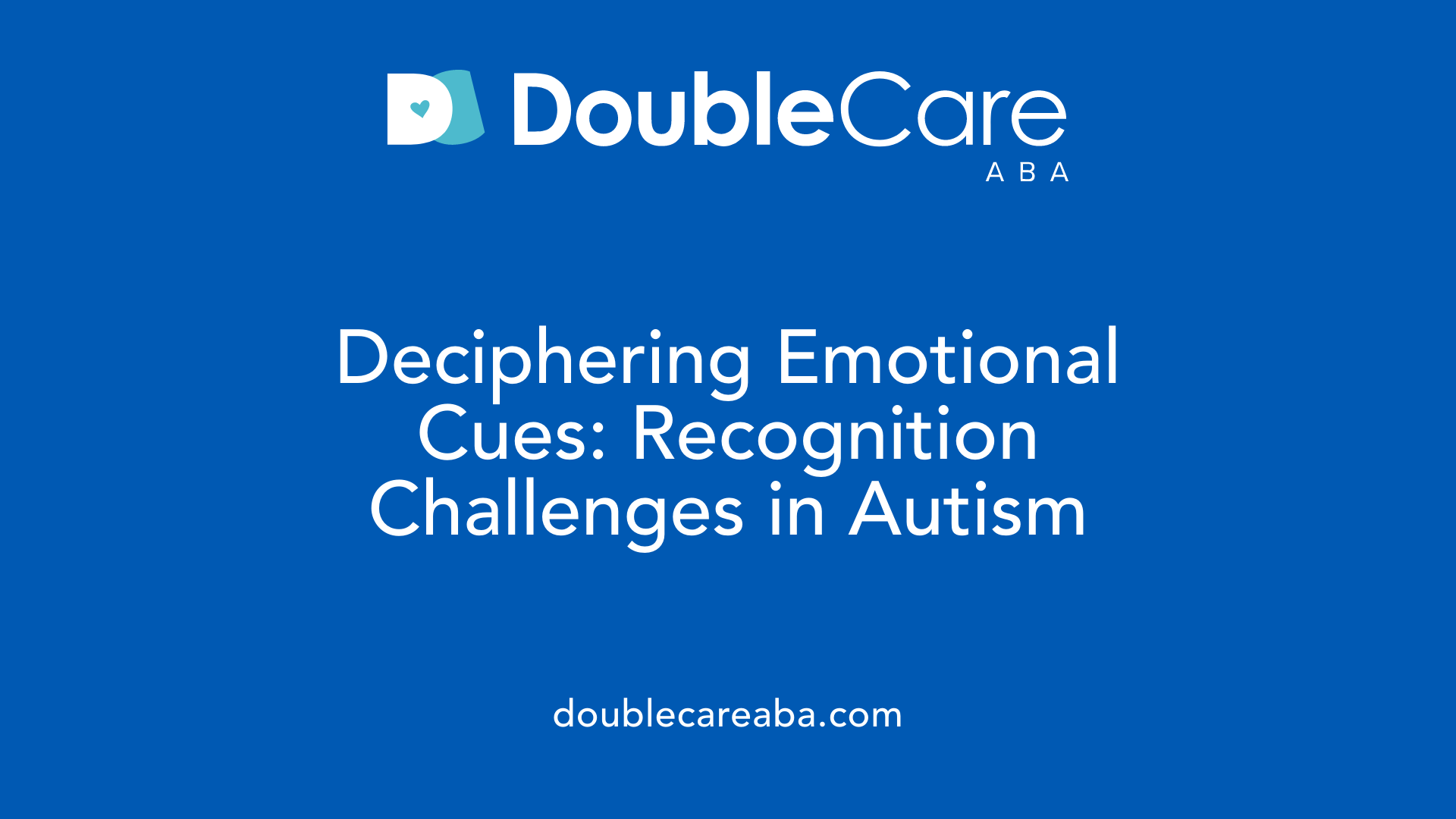
Can autistic individuals recognize and interpret facial expressions of emotion?
Difficulty in recognizing and understanding facial expressions of emotion is a prominent social-cognitive impairment observed in autism. Research indicates that people with autism spectrum disorder (ASD) often produce facial expressions that are less spontaneous, less frequent, and more fleeting compared to neurotypical individuals. This inconsistency can make their emotional cues appear exaggerated, odd, or difficult to interpret.
Furthermore, studies have shown that both autistic and neurotypical observers find it harder to recognize facial expressions from individuals with ASD. This suggests that their internal representations of typical emotional expressions are often atypical. Interestingly, even in contexts designed to promote expressive cues, individuals with autism tend to produce less natural and more intense facial expressions, especially during spontaneous interactions.
What challenges do autistic individuals face in understanding emotions?
People with autism often struggle to decode emotion from body postures and facial cues. For example, they tend to have difficulty distinguishing emotional expressions from neutral faces and may even misinterpret positive expressions, such as happiness, as neutral or negative. This misinterpretation can lead to misunderstandings during social interactions.
Autistic adolescents tend to give longer facial responses, especially when reacting to emotional stimuli, which could be perceived as exaggerated or non-typical. Many produce longer positive facial expressions, even when responding to negative content, indicating a divergence from typical emotional processing. These differences can contribute to social disconnects, as friends and peers may find their expressions confusing or overly intense.
How does facial expressivity impact social interactions?
Facial expressions play a crucial role in social communication. For autistic individuals, reduced and less synchronized facial movements—like smiling or responding to prompts—may hinder social bonding and understanding. Studies show that the ability to produce and interpret facial cues correlates with social skills and empathy.
Lower levels of smiling and facial coordination during conversations are common among autistic individuals. These challenges often result in less mutual understanding and may cause others to perceive their emotional states as distant or odd. Since social interactions rely heavily on facial cues to convey and recognize feelings, difficulties in these areas can lead to social isolation and reinforce misunderstandings.
Technological advancements aid in understanding facial expressions
To address these challenges, new technologies are being developed. Machine learning systems now offer objective measurements of facial expressions, surpassing even trained experts in accuracy. For example, researchers utilize micromovement analysis—detecting tiny facial muscle movements—to better understand the nuances of emotional expressions in autism.
Through these innovative tools, researchers aim to improve diagnostic accuracy and develop interventions that help autistic individuals better communicate and interpret emotions. Enhancing awareness of the subtle differences in facial expressivity can foster more inclusive social environments and support better social integration.
| Aspect | Typical Range | Observed in Autism | Additional Notes |
|---|---|---|---|
| Frequency of facial expressions | Frequent and spontaneous | Less frequent and more fleeting | Smaller, less natural expressions |
| Recognition by others | Accurate | Difficult for both autistic and neurotypical observers | Exaggerated or odd perception |
| Response to stimuli | Natural duration | Longer positive expressions; responses to negative stimuli often perceived as positive | Might reflect differences in emotional processing |
| Synchronization during conversation | Coordinated with partner | Less synchronized; shows social coordination difficulties | Linked to social skills and empathy |
Understanding how autistic individuals produce and interpret facial cues remains crucial. Advances in technology and research continue to shed light on these complexities, paving the way for better social supports and improved communication strategies.
The Autism Smile and Early Signatures
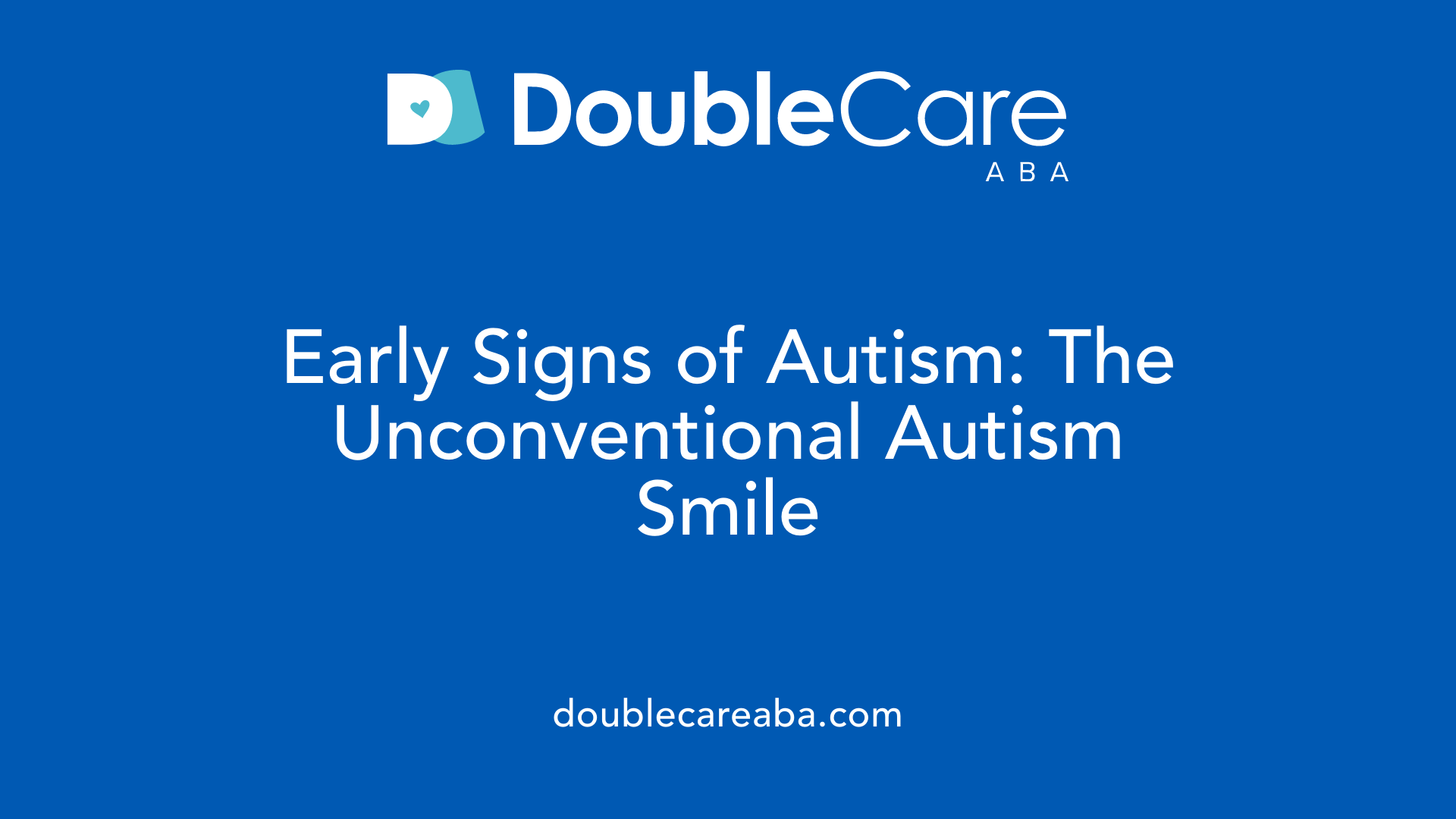
What is an autism smile?
An autism smile generally refers to distinctive facial expressions observed in infants with autism spectrum disorder (ASD). Unlike typical social smiles that are spontaneous, timely, and directed towards others, autism smiles tend to appear later—often around two to three months or even later—and are less frequent.
These smiles are usually shorter in duration and may not be explicitly connected to social cues. Instead, babies with autism might smile more in response to objects or their own feelings of joy, rather than social interactions. This difference signals a divergence from typical developmental patterns, where social smiling is a key early indicator of emotional and social engagement.
Alongside unusual smiling patterns, early signs of autism often include reduced eye contact, limited responsiveness to social stimuli, and challenges in communication. Recognizing these early cues—including atypical smiling—can help in timely diagnosis.
Early detection allows for interventions that support social and emotional development, making understanding these signs crucial for parents, caregivers, and clinicians.
Are there particular patterns of smiling in infants with autism?
Research shows that infants with autism display a unique pattern of facial expressions compared to neurotypical infants. They tend to produce fewer spontaneous smiles and often display these smiles less frequently and for shorter durations.
Moreover, these smiles are less likely to occur in response to social stimuli such as familiar faces or interactions. Instead, smiling may happen more in reaction to objects or personal sensations rather than social engagement.
These patterns might also include longer-lasting facial expressions that seem more positive or exaggerated even when responding to negative stimuli, which can further hinder social communication.
How do these smiles differ from neurotypical smiles?
In neurotypical development, smiling is a natural, timely response to social cues, often used to communicate joy, interest, or social bonding. These smiles are spontaneous, well-timed, and usually directed toward others.
In contrast, autistic infants' smiles tend to be less spontaneous and less tightly linked to social cues. They might smile more at objects or self-generated feelings rather than in response to social interaction.
Furthermore, studies suggest that the facial expressions of autistic individuals can be perceived as odd or exaggerated, primarily because their emotional expressions often fall outside the typical range recognized by most people.
Understanding these differences helps in appreciating the distinct ways in which individuals with ASD communicate emotions and can guide caregivers and professionals in supporting early social development.
Neural and Physiological Underpinnings of Facial Expressivity

What are the physiological aspects involved in facial expressions in autism?
Autistic individuals show activity in the facial muscles associated with emotional expression, similar to that of neurotypical people. However, the intensity and spontaneity of these expressions often differ.
Research indicates that the muscles responsible for expressing emotions are active in both groups. These muscles produce facial movements involved in showing happiness, sadness, or other emotions. The difference lies in how strongly or subtly these muscles activate.
Innovative technologies have allowed scientists to analyze tiny facial movements called micromovements. These small adjustments occur at a microscopic level and are often too subtle for the human eye to detect. Yet, with specialized methods, these motions can be measured and studied.
A notable study led by Rutgers used micromovement spikes to observe these tiny facial motions through short videos captured by standard devices like smartphones or tablets. The findings showed that autistic individuals do produce facial muscle activity similar to neurotypical individuals, but often with different intensities. For example, they may have less pronounced or more fleeting expressions.
This understanding helps explain why facial expressions in autism can seem overly intense, unusual, or less natural to others. The muscles do activate, but the patterns and strength of these activations differ, contributing to social recognition challenges.
Overall, the neural basis involves the activity of facial muscles sharing patterns seen in neurotypical development, but with variations in how strongly muscles engage during emotional displays. This nuanced activity underscores the need for advanced measurement techniques to better understand emotional expression in autism.
Technological Advances in Facial Expression Analysis
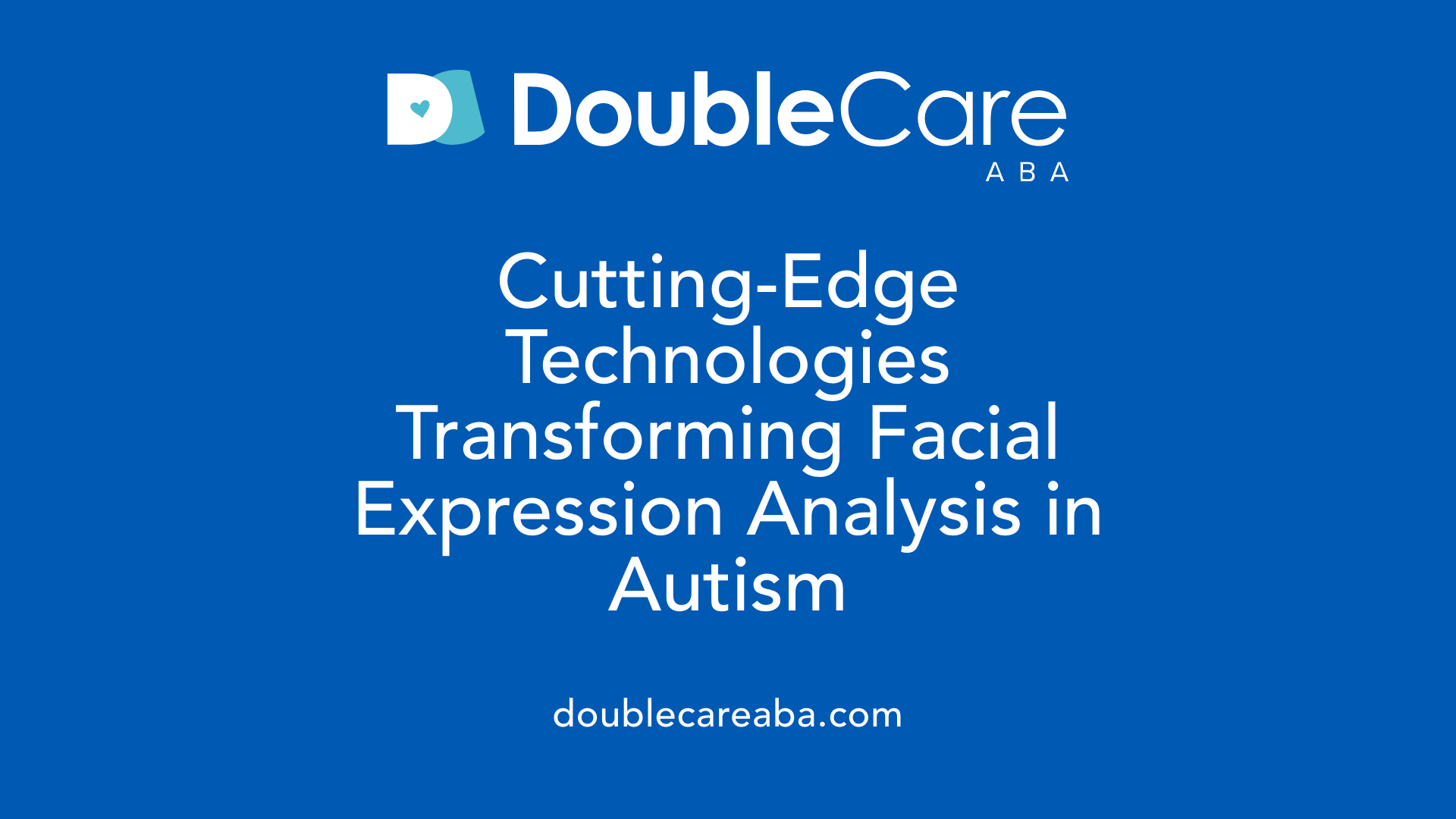
What new technologies are being developed to assess facial expressions in autism?
Recent developments in technology are transforming how facial expressions in autistic individuals are measured and understood. Researchers are harnessing machine learning and artificial intelligence (AI) to create tools capable of analyzing microscopic facial movements that are usually too subtle for the human eye. Such tiny movements, called micromovements, reveal muscle activity related to emotional expressions.
A groundbreaking study from Rutgers involves using simple, everyday devices like smartphones or tablets to record brief videos. These videos are then processed to detect these micromovements using specialized algorithms that create what is known as micromovement spikes. These allow for a detailed and objective analysis of facial muscle activity, offering insights that go beyond traditional observational methods.
Some of these advanced systems have even surpassed human experts in accurately distinguishing emotional expressions. This innovation enhances our ability to identify subtle differences in facial expressivity among autistic individuals, which often go unnoticed or are misinterpreted in everyday interactions.
How does this technology help in understanding autism?
The implementation of AI-driven facial expression analysis provides a quantifiable way to assess emotional communication. It helps in recognizing genuine emotional responses and identifying atypical patterns that may not be obvious through standard observation.
By understanding these microscopic facial movements, clinicians and researchers are better equipped to interpret how autistic individuals express and perceive emotions. This can lead to improved diagnosis and tailored interventions aimed at supporting social interaction.
Improving diagnostic accuracy and social understanding
The integration of these technologies into diagnostic procedures is poised to increase accuracy by providing objective, detailed measurements of facial expressivity. This, in turn, can facilitate earlier detection of social communication difficulties and support more effective therapies.
Overall, AI and machine learning systems are revolutionizing the study of facial expressions in autism, making it possible to capture nuanced emotional cues and better understand the complex emotional lives of autistic individuals.
| Technology | Purpose | Advantages | Example |
|---|---|---|---|
| Machine Learning Systems | Automated micromovement detection | Surpass experts in accuracy | Rutgers’ facial micromovement analysis |
| Computer Vision | Analyze subtle facial cues | Minimize observer bias | Smartphone-based micromovement tracking |
| AI-based Diagnostics | Enhance early diagnosis | Increase sensitivity and specificity | AI tools integrated into diagnostic assessments |
Facial Expression Recognition Challenges in Autism
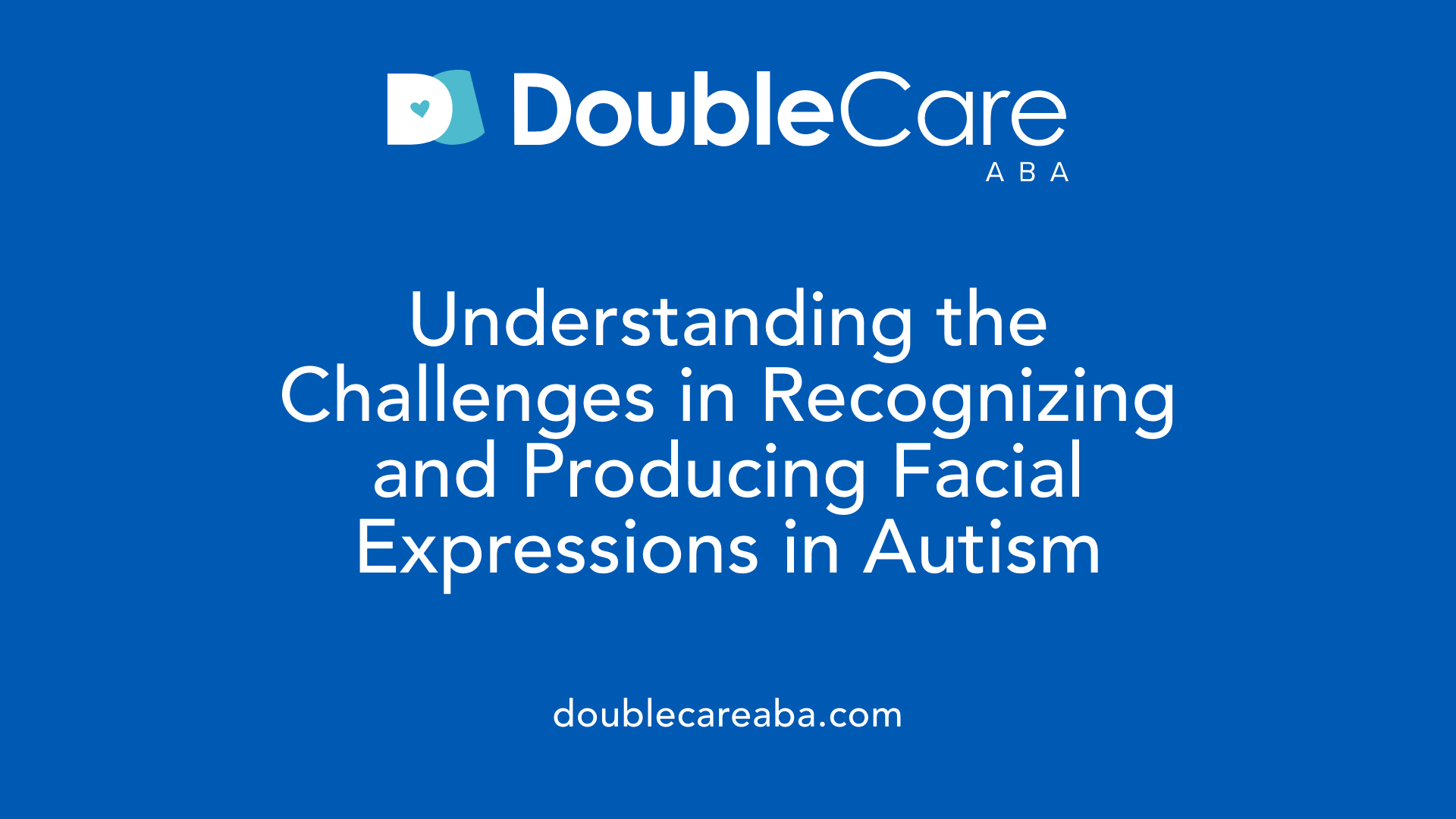
Can autistic individuals recognize and interpret facial expressions of emotion?
Difficulty recognizing and understanding facial expressions of emotion is a prominent social-cognitive impairment observed in autism. While autistic adults do experience emotions as intensely as neurotypical adults, their facial expressions often appear less natural and more exaggerated or odd to observers. This can hinder effective social communication, as others may struggle to accurately interpret their emotional states.
Perception and interpretation difficulties
People with autism tend to produce fewer and less spontaneous facial expressions, especially in unfamiliar or social contexts. When they do show emotions, these expressions can be more intense and last longer than typical, but they are often perceived as atypical or confusing. Subtle facial movements, called micromovements, which are usually too minute for the human eye to detect, are common in autistic facial expressions. Advanced techniques and machine learning systems are now being developed to identify these micro-movements, revealing that underlying emotional muscle activity is similar in autistic and neurotypical individuals. However, the overall expressivity in autism remains lower.
Autistic individuals also struggle with recognizing others' emotions based on facial cues. They often have difficulty distinguishing emotional from neutral expressions and may even misattribute emotions, such as perceiving happiness as neutrality or negative emotions. Furthermore, the influence of body posture significantly impacts how autistic people perceive facial expressions, often more heavily than in neurotypical individuals. This suggests a broader challenge in integrating facial and body cues for emotion recognition.
Recognition accuracy among autistic and neurotypical observers
Both autistic and non-autistic observers find it harder to interpret facial expressions produced by individuals with autism. Expressions created in natural, spontaneous contexts are recognized more easily than posed ones, especially when cues highlight intentional communication. Studies show that autistic adults have a reduced ability to discriminate emotions and often interpret expressions as more positive than intended, even when responding to negative stimuli. This bias may contribute to misunderstandings during social interactions.
Facial expressions produced by autistic adolescents tend to be longer and more positive, even in response to negative stimuli, leading to potential misinterpretations. Conversely, children with autism produce fewer and more neutral expressions overall. The level of alexithymia, a difficulty identifying and describing emotions, also correlates with reduced facial expressivity and more neutral expressions, regardless of ASD diagnosis.
Impact of atypical expressions on social understanding
Difficulties in expressive behavior and facial recognition can intensify social challenges faced by autistic individuals. For example, less synchronized expressions during conversations are linked to poorer social skills and empathy. These differences in facial expressivity and recognition may foster misunderstandings, social isolation, and impede effective communication.
Research continues to explore technological advancements that might bridge these gaps. For instance, automated tools for analyzing facial expressions aim to improve recognition accuracy and deepen understanding of subtle emotional cues in autism. Ultimately, improving recognition and interpretation of facial expressions can foster better social interactions and support for autistic individuals.
| Aspect | Observation | Impact | Additional Details |
|---|---|---|---|
| Facial Expression Production | Less frequent, less spontaneous, longer duration | Challenges in expressing emotions naturally | Differences increase with age and IQ decrease |
| Recognition by Others | Difficulty recognizing expressions; over-influence of body cues | Misinterpretations, social miscommunication | Both ASD and NT find ASD expressions harder to interpret |
| Recognition Accuracy | Less accurate across groups; bias towards perceiving positive emotions | Social misunderstandings | Machine learning tools are improving detection |
| Influence of Body Posture | Stronger effect in autistic individuals | Compounds expression recognition difficulties | Related to lower facial expression discrimination |
| Emotional Bias | Tendency to see smiling or positive expressions even when stimuli are negative | Misinterpretation of emotional context | Longer positive responses in autism |
Understanding these facial expression challenges emphasizes the importance of tailored interventions and technological solutions. Such efforts aim to improve emotional recognition skills, facilitate social understanding, and enhance the quality of life for autistic individuals.
Impact of Facial Expression Variability on Social Interaction
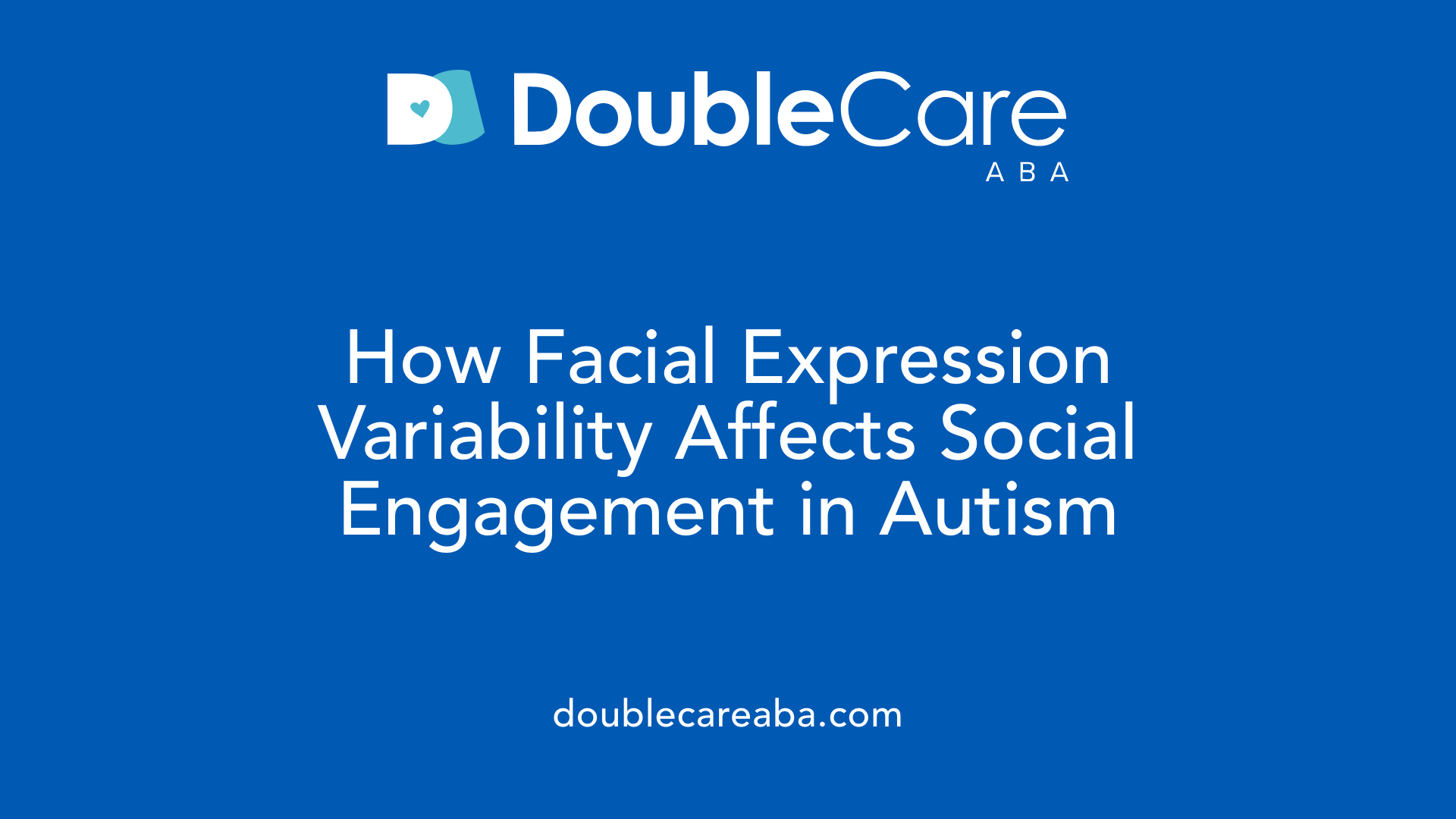
How does the expression intensity and naturalness of individuals with autism affect social interactions?
People with autism spectrum disorder (ASD) often produce facial expressions that are less spontaneous and less frequent compared to neurotypical individuals. These expressions tend to be more intense and perceived as exaggerated or odd by observers. Even when emotional expressions are evoked naturally or in response to stimuli, they might appear less genuine or less natural to others. Such heightened or atypical expressions can create misunderstandings in social situations, leading to confusion about how an autistic person truly feels.
Moreover, research shows that facial muscles responsible for emotional expression are active in autistic individuals, but the intensity often falls outside the range that most people recognize as typical. These subtle differences are sometimes too nuanced for the human eye but can be detected with specialized technology. For example, micromovements, tiny facial muscle movements, differ in their intensity and timing.
How well can others recognize emotions expressed by individuals with ASD?
Recognition of facial expressions by others plays a crucial role in social communication. Studies reveal that both neurotypical and autistic observers find it challenging to interpret facial expressions produced by individuals with ASD. The expressions tend to be less recognizable and often perceived as overly intense or confusing.
Interestingly, expressions produced in contexts that emphasize communicative intent—such as real conversations or visual feedback—are recognized better than those produced during posed or standard testing conditions. This suggests that contextual cues can help improve understanding, but core difficulties remain. Autistic adults, in particular, show reduced accuracy in internalizing and representing typical emotional expressions.
An important aspect is that people with ASD may have a different internal representation of emotions, which influences the facial expressions they produce. They often misinterpret or over-attribute emotions to neutral faces, common in social interactions. For example, happy faces are sometimes misread as neutral, and neutral faces may be perceived as negative, contributing to misunderstandings.
How do these expression differences lead to social misunderstandings?
The mismatched or exaggerated facial expressions can lead others to respond inappropriately or dismissively, which may increase social isolation for autistic individuals. Reduced synchronization of facial expressions during conversations, such as less smiling or mismatched reactions, further hampers effective social communication.
Studies involving conversations reveal that autistic individuals tend to exhibit less facial expression matching and synchronization. These behaviors are associated with difficulties in social coordination and are linked with lower empathy, communication, and social skills.
What does current research suggest about improving social interactions?
Advances in technology, including machine learning systems that analyze facial micromovements, offer promising tools for better understanding and recognizing subtle expressions in individuals with ASD. Such systems can surpass human accuracy and could be used for early diagnosis and targeted social skills training.
By recognizing the differences in facial expressivity and understanding their roots, clinicians and caregivers can develop strategies that accommodate these variations. Emphasizing context and communicative cues, along with technological aids, may enhance social interaction and reduce misunderstandings.
| Aspect | Typical Range | Differences in ASD | Implications |
|---|---|---|---|
| Expression Intensity | Moderate and genuine | Often exaggerated or less natural | Leads to misinterpretation |
| Recognition by Others | Clear, consistent | Less recognizable, often perceived as odd | May cause social withdrawal |
| Emotional Response Duration | Fairly consistent | Longer or lengthened facial responses | Affects social timing and responsiveness |
| Synchronization during conversation | Matched and responsive | Less synchronized, mismatched facial cues | Challenges social bonding |
Understanding the variability in facial expressions in ASD is essential for improving social experiences. By focusing on these nuances, support systems can foster better communication and more meaningful interactions.
Facial Expression Production and Atypicality
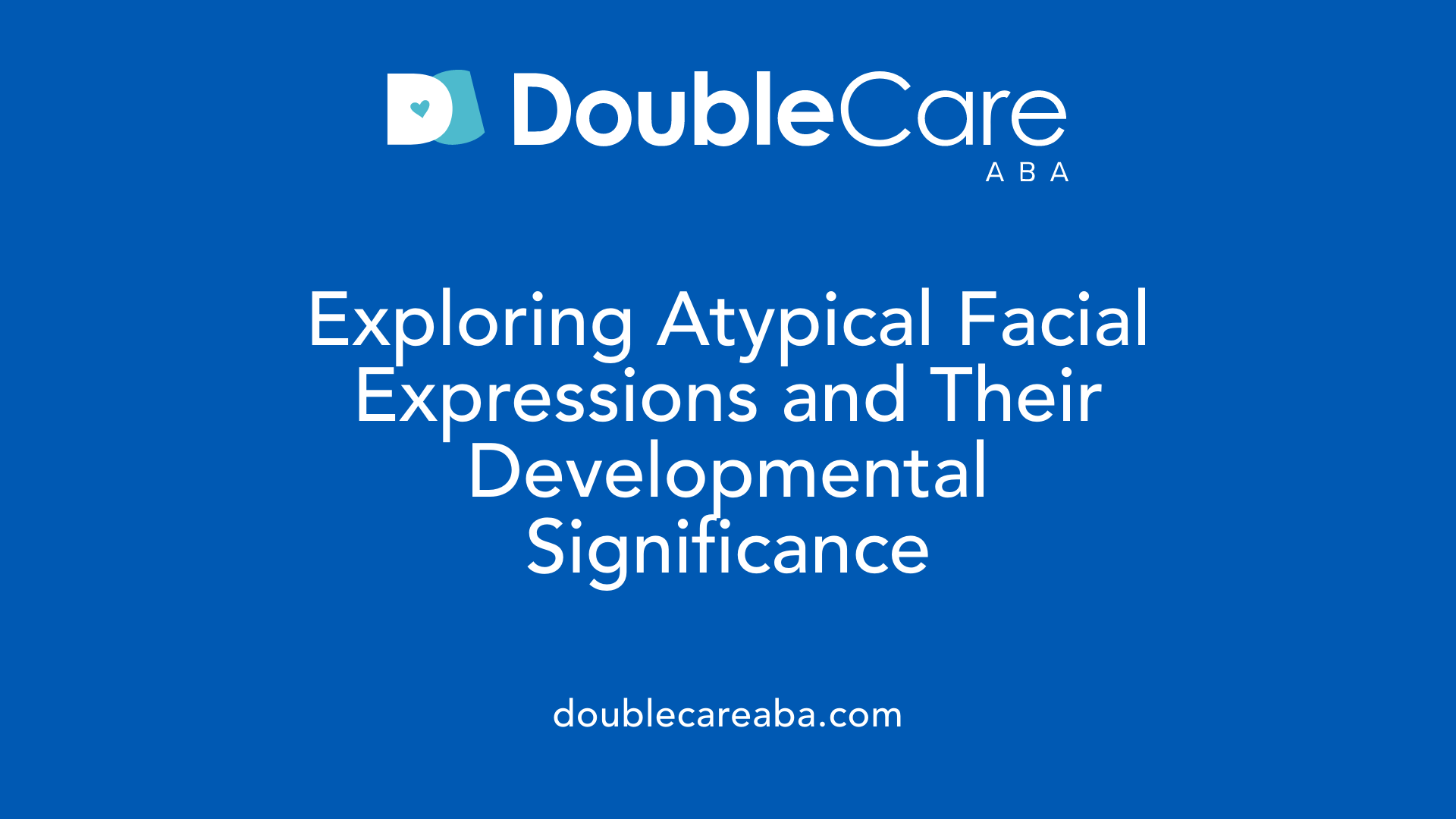
What are common facial expressions observed in individuals with autism?
Individuals with autism often display distinctive patterns of facial expressions. They tend to produce fewer spontaneous facial movements, and their expressions are less varied and less natural compared to neurotypical individuals. For example, they may produce limited eye contact, unusual smiling or laughing, and fewer facial expressions during social interactions. Despite these differences, they use the same basic movements to express emotions but often do so with less intensity and spontaneous variability.
How do the duration and intensity of facial expressions differ in autistic individuals?
Research shows that adults with autism produce facial expressions that last longer when responding to emotional stimuli. They tend to exhibit extended facial responses to both positive and negative videos, especially adolescents, who display longer positive expressions than their neurotypical counterparts. Additionally, facial expressions in autism are often perceived as more intense or exaggerated, but these are usually less natural-looking. For example, autistic individuals might produce smiles or frowns of similar size to those of controls; however, the expressions may seem odd or hard to interpret due to atypical intensity and timing.
How are facial expressions recognized and perceived in autism?
Recognition of facial expressions by both autistic and neurotypical perceivers is often challenging when observing autistic individuals. Their expressions, whether spontaneous or prompted, are generally less recognizable, with others perceiving them as exaggerated or odd. Expressions produced during communication are recognized better when cues emphasize intent and visual feedback but are still less accurate overall. Moreover, autistic adults notoriously misinterpret emotional faces, such as mistaking happy faces for neutral or attributing negative emotions to neutral or non-emotional faces. These perception difficulties are partly due to differences in the internal mental representation of facial expressions, which are less precise than in neurotypical individuals.
Additional insights into facial expressiveness
Advances in technology, including machine learning, have allowed researchers to analyze tiny muscle movements termed micromovements—subtle facial movements undetectable by the human eye. Studies using micromovement spikes found that muscle activity responsible for emotional expression is comparable in both groups, but the intensity of these movements is different. These subtle differences can influence social perception and may contribute to social isolation.
The impact of age, IQ, and social interaction
As individuals with autism grow older and as their IQ increases, differences in facial expressivity tend to decrease, suggesting developmental and compensatory mechanisms. Also, during social activities like conversations, autistic individuals show less synchronized facial movements such as smiling, which correlates with social and communication challenges. Overall, less spontaneous facial expressiveness and reduced synchronization can affect social bonding and understanding.
| Aspect | Typical Development | Autism Spectrum | Additional Notes |
|---|---|---|---|
| Spontaneous Facial Expressions | Commonly spontaneous and varied | Fewer, less spontaneous | Especially in social settings |
| Duration of Expressions | Brief and appropriate | Longer, prolonged responses | Especially to emotional stimuli |
| Intensity | Within a familiar range | Often perceived as exaggerated or odd | Due to atypical expression pattern |
| Recognition | Generally straightforward | Difficult for others to interpret | Both by ASD and NT observers |
| Neurological Underpinning | Typical muscle activity | Muscle activity similar but intensity differs | Micromovement research elucidates differences |
| Social Interaction | Smiles synchronized with conversations | Less synchronized, more mismatched | Contributes to social challenges |
Understanding these differences in facial expression production and perception enhances our insight into social cognition in autism. It highlights the importance of developing tools and interventions that focus on subtle facial behaviors to foster better social interactions and emotional recognition in individuals with ASD.
Facial Expression and Emotional Biases in Autism
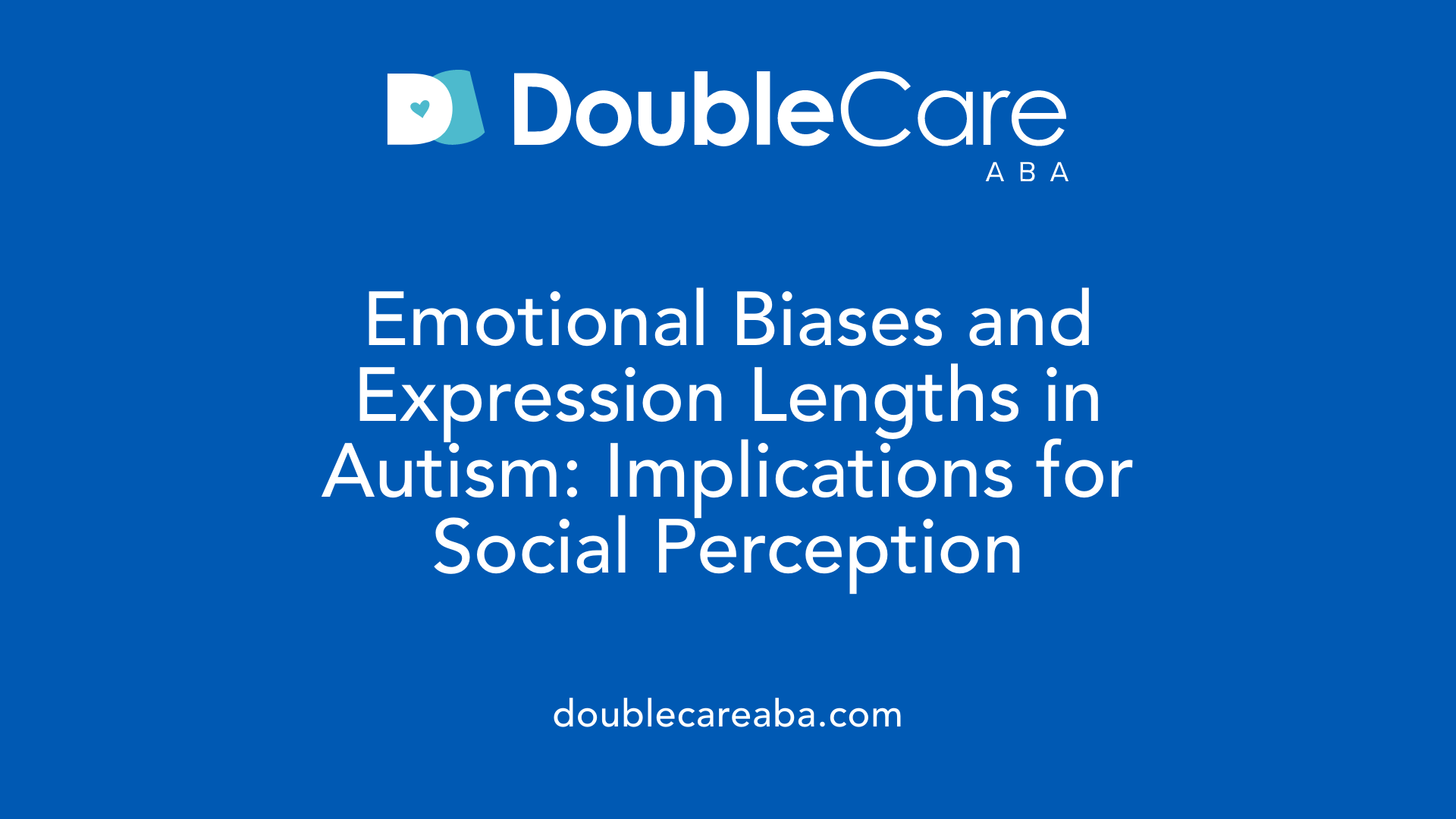
How long do autistic individuals’ facial responses last when reacting to stimuli?
Autistic adults tend to produce facial expressions that are longer in duration compared to their neurotypical counterparts. This pattern is especially noticeable in their responses to emotional stimuli, where both positive and negative expressions tend to be extended.
For example, when shown videos or images with emotional content, adults with autism often exhibit prolonged facial movements, such as smiles or frowns. Notably, positive expressions, like smiling, can last longer than in neurotypical individuals, indicating a different temporal processing of emotional cues.
This extended expressive duration is also observed in adolescents with autism, who not only produce longer positive facial expressions but also tend to respond more overtly to negative stimuli with prolonged expressions.
Understanding these timing differences in facial responses can help better interpret autistic emotional behaviors, especially in social settings where timing and cues are crucial.
Why do autistic individuals tend to produce longer positive expressions?
Research suggests that autistic individuals often exhibit lengthier positive facial expressions, like smiling, especially when exposed to audiovisual stimuli. These longer smiles are not necessarily linked to genuine happiness or positive feelings but may be a result of a different processing or expression style.
Interestingly, autistic adolescents often display extended positive reactions even when stimuli are negative, which could reflect either a social-communicative adaptation or a unique emotional processing pattern.
This tendency to produce longer positive facial expressions may create a style that appears exaggerated or mismatched to observers unfamiliar with autism, potentially impacting social interactions and perceptions.
Is there a perceived positive bias in how facial expressions of autistic individuals are interpreted?
Automated analyses and observational studies have shown that facial expressions from autistic individuals are often perceived as more positive than intended, regardless of the emotional stimulus. This perception skew might be due to the longer duration and intensity of their positive expressions.
Furthermore, autistic adolescents frequently produce facial movements that are interpreted as positive, even when the context involves negative content. This phenomenon points to a potential positivity bias in how their facial expressions are viewed, which influences social judgments.
While this over-attribution of positive emotion can sometimes mask underlying difficulties, it also highlights how expressive differences and perceptions intertwine in autism. Recognizing these biases is vital for improving social understanding and communication strategies.
Developmental and Age-Related Changes in Facial Expressions
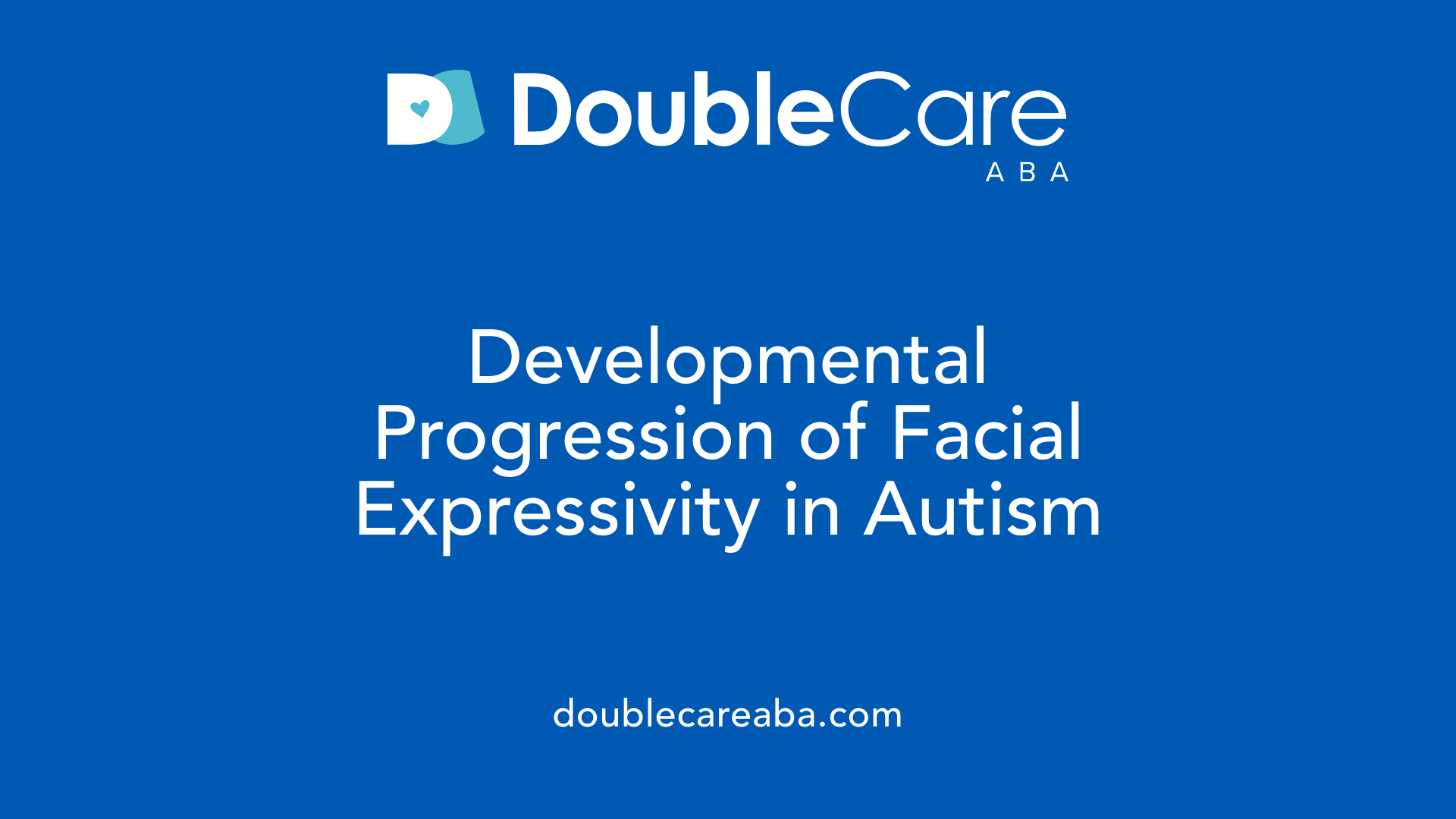
How do age and IQ affect facial expressions in individuals with autism?
Research indicates that as individuals with autism grow older and their IQ increases, their facial expression differences compared to neurotypical individuals tend to decrease. This suggests that developmental progress and cognitive growth can help improve facial expressivity over time.
In childhood, autistic individuals often produce fewer and less spontaneous facial expressions. However, with age, these differences become less pronounced, reflecting some natural development and possibly learned behavioral adaptations.
Do autistic individuals show developmental improvements in expressivity?
Yes, many studies highlight that facial expressivity in autism shows signs of improvement across developmental stages. Older autistic adults tend to produce facial expressions that are more similar to those of neurotypical peers, especially in controlled or prompted settings.
Moreover, specific facial movements—such as smiling or frowning—become more natural or typical as age increases. These improvements suggest that some deficits in spontaneous expressivity might be mitigated by developmental and social learning mechanisms.
Are there compensatory strategies in older or higher IQ autistic individuals?
Some evidence hints at the development of compensatory strategies among autistic individuals with higher IQs. These individuals may learn to produce more typical facial expressions when consciously prompted or in familiar social situations.
Such adaptations can help bridge some social communication gaps, enabling better interactions. The decrease in expressivity differences with age and IQ supports the idea that these individuals develop internal or external mechanisms to enhance social understanding.
| Aspect | Findings | Additional Notes |
|---|---|---|
| Age-related improvements | Reduced facial expressivity gaps | More natural expressions in older individuals |
| Impact of IQ | Enhanced expressivity with higher IQ | Better adaptation and learning capacity |
| Developmental trend | Slight increase in spontaneous expressivity | Continuous social and emotional growth |
Understanding these factors underscores the importance of ongoing social and emotional development, which can lead to meaningful improvements in facial communication for individuals with autism.
Facial Expressions in Social Contexts and Communication
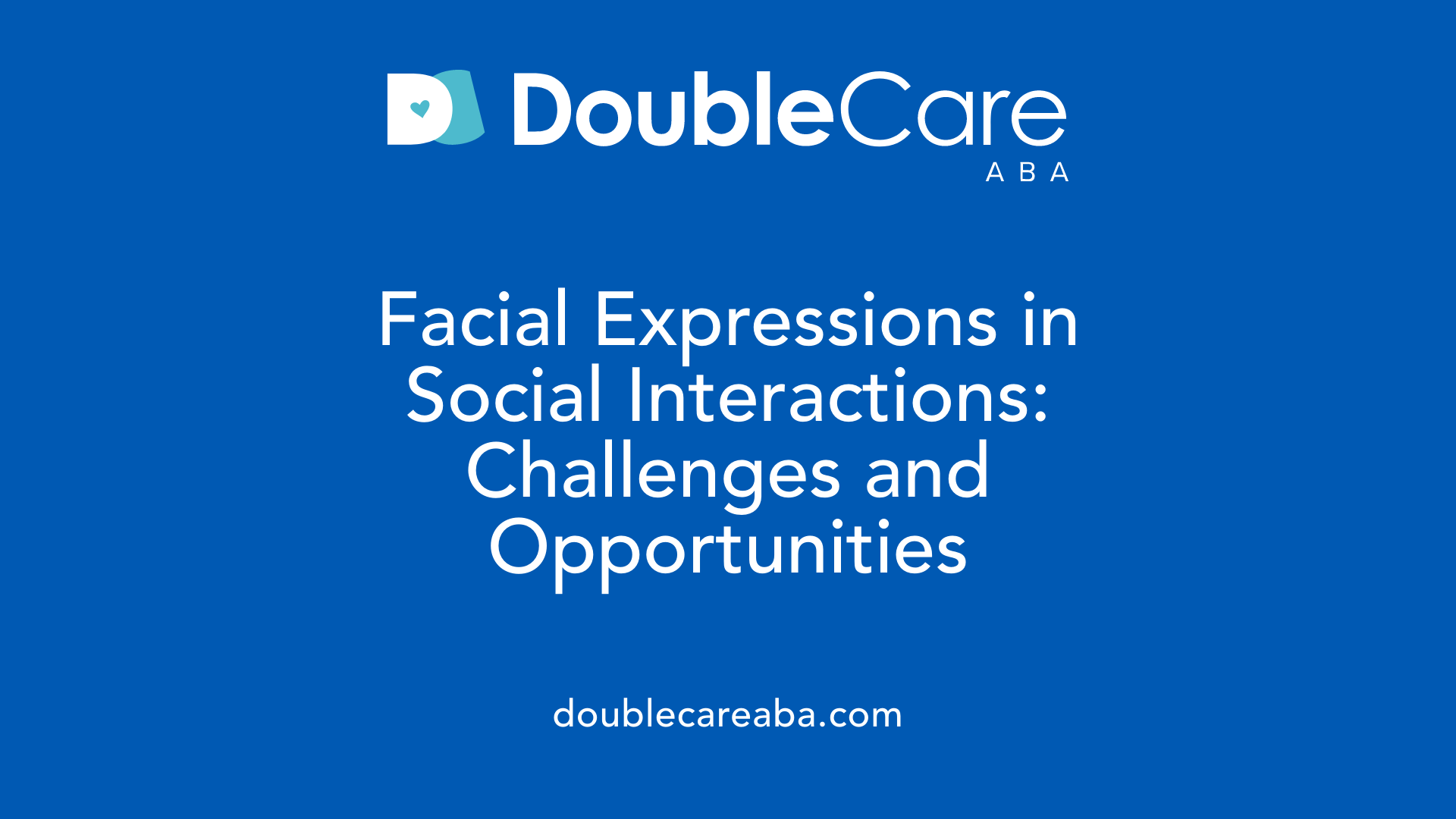
How do autistic individuals behave during social interactions regarding facial expressions?
Autistic individuals often display fewer and less spontaneous facial expressions in conversations compared to neurotypical peers. During social interactions, such as chats or group meetings, they tend to produce less smiling and exhibit more mismatched facial behaviors. These mismatches mean their facial expressions may not align well with what is being communicated, leading to challenges in social understanding.
Research shows that autistic people are generally less synchronized with their conversation partners' facial cues. For example, during dialogues involving parents or researchers, autistic participants display reduced facial mirroring and emotional matching. This lack of facial coordination can hinder mutual understanding and empathy — skills vital for successful social interactions.
Autistic individuals also produce tone and expressions that may seem odd or exaggerated to others, especially in spontaneous situations. Sometimes their facial reactions are more intense than typical, which can be perceived as overly intense or atypical. Such patterns could contribute to misunderstandings and social withdrawal, as others might find it difficult to interpret these expressions accurately.
Crucially, the degree of facial expression synchronization is linked to social-communication competencies. When facial mirroring is closer to typical levels, autistic individuals tend to have better social skills and more positive social experiences. Conversely, less synchronized facial expressions might reflect or reinforce social difficulties.
Interaction during conversations
In studies involving real-time conversations, researchers observed that autistic participants tend to smile less and show less emotional matching during dialogues with familiar or unfamiliar partners. When talking to their mothers, who are familiar, their facial expressions still lag behind and show less coordination compared to neurotypical children.
This reduced reciprocity in facial movements can make conversations feel less engaging and more challenging for both parties. It also reduces the subtle, non-verbal cues that facilitate a sense of rapport and understanding. As a result, social interactions might be experienced as awkward or disconnected.
Social synchronization and matching
Synchronization of facial expressions — such as smiling when smiling or showing concern when another is distressed — plays a vital role in smooth social exchanges. In autism, this synchronization often diminishes, potentially due to underlying difficulties in social cognition and emotional processing.
Studies indicate that the less synchronized facial expressions are, the more likely it is that social or communication impairments will be observed. The level of this facial emotional mirroring correlates positively with social skills, empathy, and adaptive behavior.
Effect of familiarity and context
Interestingly, familiarity impacts facial matching behaviors. Autistic individuals tend to synchronize their facial expressions more when interacting with familiar people, like family members, than with strangers. Contextual cues, such as the conversational setting or emotional content, also influence facial expressiveness. For instance, participants may show more natural expressions when emotionally engaged or prompted to do so.
Emerging technologies employing automated facial analysis are now enabling more precise measurements of these subtle interactions. They reveal that differences in facial expressiveness are not merely about lack of emotion but may reflect specific social processing patterns. These insights are helping to develop better interventions to support social communication in autism.
| Aspect | Typical Behavior | Autism Spectrum Variability | Impact on Social Interaction |
|---|---|---|---|
| Facial expressiveness | Frequent, spontaneous smiles, clear expressions | Less frequent, more fleeting expressions | Reduced emotional clarity, potential misunderstandings |
| Synchronization | High, mirroring partner’s expressions | Lower, less often synchronized | Difficulties in establishing rapport, social bonding |
| Response to cues | Immediate and context-appropriate | Less consistent, sometimes exaggerated or muted | Challenges in emotional regulation and reciprocity |
| Effect of familiarity | Maintains natural expressiveness | Slight increase with familiar partners | Potential opportunity for supportive social strategies |
In sum, impaired facial expression coordination during conversations can be a hallmark challenge for autistic individuals. Understanding and addressing these differences through technology and targeted social skills training may help foster better social experiences and communication outcomes.
Enhancing Understanding and Support Through Better Recognition
Advancements in research, technology, and early intervention are vital for deepening our understanding of facial expressions in autism. Recognizing the nuanced differences and challenges faced by autistic individuals in expressing and interpreting emotions can foster more inclusive social environments and improve diagnostic accuracy. Continued efforts to develop objective measurement tools and to educate about atypical facial behaviors are essential for supporting social integration and emotional well-being in autism spectrum disorder.
References
- Autistic Subjects' Facial Expressions Don't Always Mirror Emotions
- People with autism sometimes give ambiguous looks - The Transmitter
- Tracking Tiny Facial Movements Can Reveal Subtle Emotions in ...
- Can Neurotypical Individuals Read Autistic Facial Expressions ...
- The influence of body posture on facial expression perception in ...
- Misinterpretation of Facial Expressions of Emotion in Verbal Adults ...
- Positive emotional valence in spontaneous facial expressions of ...
- Alexithymia, but not autism spectrum disorder, may be related to the ...
- Facial expressions between autistic and typical people may be ...






